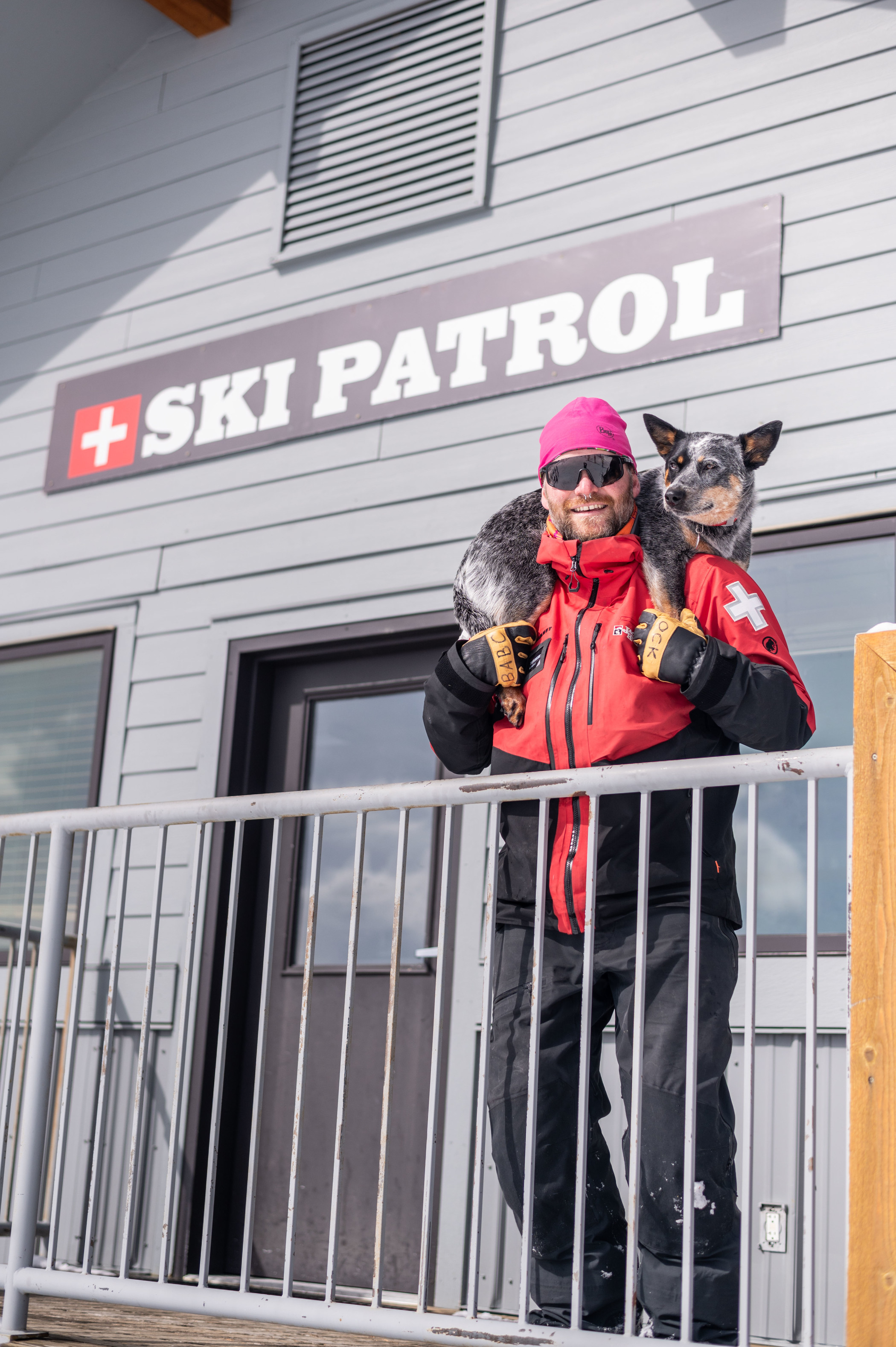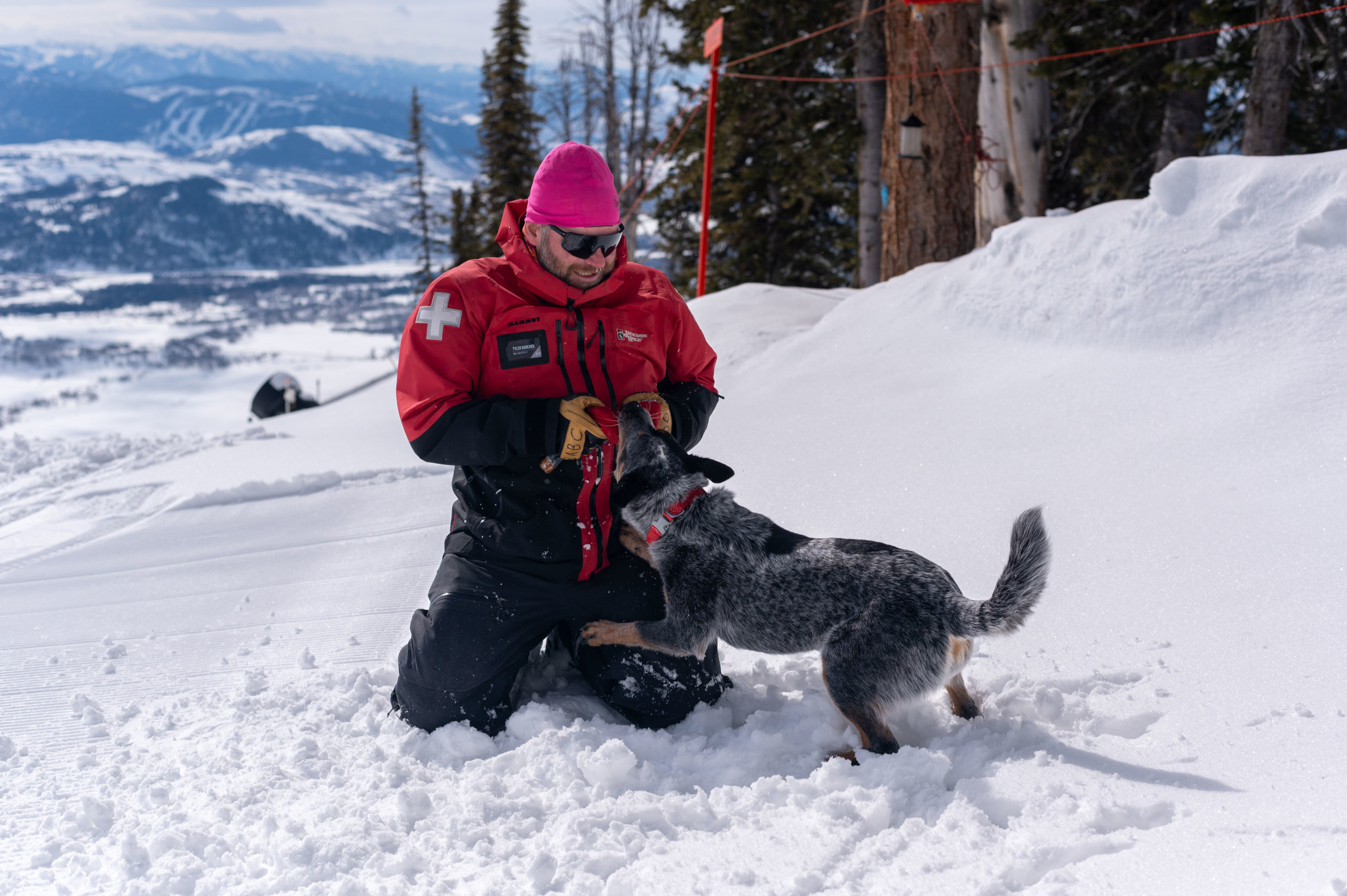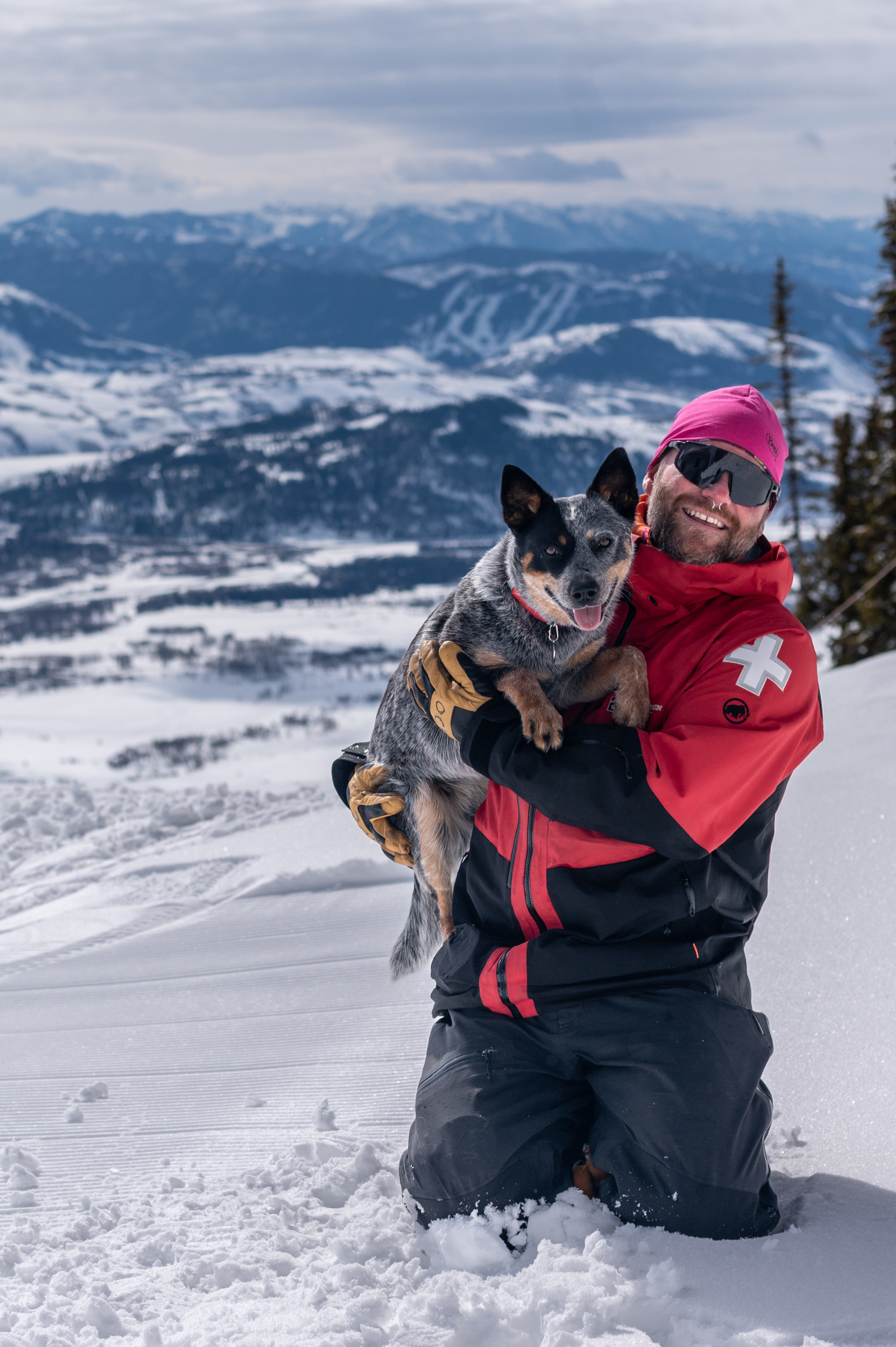Jackson Hole Mountain Resort has long been famous for its avalanche rescue dog program (meet the current roster here), but what’s it like during a day in the life of a ski patroller and their furry companion? We caught up outside the Teton Patrol Shack with patroller Tyler Babcock and his dog Dolly, an adorably tenacious Australian Cattle Dog who’s the youngest member of the Patrol Dog team and will hopefully test for her validation next year.

Babcock has been working as a Jackson Hole patroller since 2017, after working for several years in other departments. “It takes a few years on Patrol to really learn the job,” says Babcock, “since you don’t wear the same hat every day, there’s lots of experience you need to gain.” That means before stepping into a dog handler role, a patroller needs to be prepared as best they can.
“It’s like bringing a toddler to work,” he says, giving Dolly a scratch on the head, “You want to know how to do your job before you attempt to teach a dog theirs.”
The Patrol Dog program has a rich history at Jackson Hole Mountain Resort, where canines have been used for decades as part of search and rescue operations both in and out of bounds. They have successfully found avalanche victims alive under the snow and have proven to be an invaluable resource when Patrol needs to respond to an avalanche. JHMR dogs are owned by the handlers - and the dogs actually get a paycheck for their work. The dog teams earn their validation through the Colorado Rapid Avalanche Deployment (C-RAD) organization.
Dolly and her teammates undergo rigorous training alongside their handlers throughout the program. Babcock got Dolly when she was just 8 weeks old. “I picked her up on Sunday, and she came to work on Monday,” he says. A large part of the training is getting the dogs comfortable around the incredibly stimulating environment that is Jackson Hole Mountain Resort.

From early on, the dogs are exposed to all manner of sounds, smells, textures, and conditions to get them used to what they will encounter on the job, including chairlifts, snowmobiles, avalanche bombs and even helicopters. It also gives the handler an opportunity to understand how the dog will respond to certain situations. For example, Babcock studies how Dolly will respond under stress - ideally that her instinctual drive to find someone under the snow is still there when things get stressful.
During a real scenario, the stakes couldn’t be higher for first responders, but for the dog, it’s nothing more than a game.
“We specifically choose dogs that have a strong prey and hunt drive, and really tap into those primal instincts,” says Babcock. Puppies are selected from a litter and undergo a Volhard Puppy Aptitude test to see what their personalities may become and whether they will make a good working dog. Once selected, the training starts with endless hours of playing fetch and tug with a favorite toy, before transitioning to hide and seek, and eventually hide and seek involving a mock live burial. That involves burying a person inside a snow cave or igloo and having the dogs find them for their reward in a game of tug.

In the rare case of a real rescue, the dogs would be brought on scene by their handler either on their shoulders or on a toboggan before being allowed to scour the avalanche debris and find a buried victim or declare the site clear.
Right now, one-year-old Dolly is still training and Babcock hopes to validate with her next season. “Our dogs have an average career of something like 8 years,” he says. So next time you're getting off Teton or the top of the Tram and you see an Australian cattle dog running around having more fun than you could ever imagine, stop by and say hello!